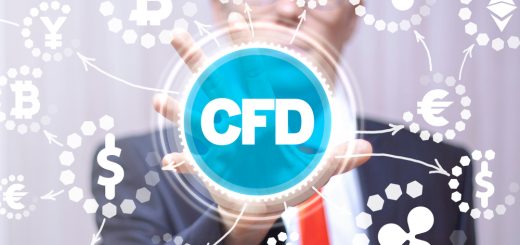Retail Financing? How It’s Going To Change In 2021
With the onset of the coronavirus in 2020, any estimations made in the financial sector by individuals were rendered redundant. This situation happened due to nationwide lockdowns and social distancing measures.
As people began struggling financially, every market sector witnessed a massive blowout. The only prediction that might not have been present on lists at the beginning of 2020 was the exponential rise of retail finance.
The payment method was already climbing exceptional heights with consumers. But, as credit-card payments were on the decline, retail finance turned out to be an ideal preference for lockdown check-outs.

Emerging Trends In Retail Financing In 2021
Check out these rising trends in the realm of retail financing in 2021 and what changes they might harbor for the world:
1. More Volume
All retail finance lenders have witnessed a surge in uptake over the last six months. This trend will continue to prevail in 2021, considering that lockdowns are getting lifted and people have started to step out again.
Amid the ambiguity created by the pandemic, most people have gotten restrained in their discretionary spending habits.
With the vaccine getting rolled out and consumers seeing the light at the end of the proverbial tunnel, shopping will restart, and retail-finance volume will advance to reach greater heights.
2. Heightened Customer Expectations
Consumer expectations have evolved rapidly over the previous year. With finance, customers are now used to being offered this service in-store and thus, anticipate the same provision online.
As in the case of economic uncertainty, the demand for credit is surging. Even the customers who have the cash to pay for products they need upfront are hesitating to deplete their savings.
This scenario has manifested because the people are required to rely on that cash in the future. People fear losing their job or being incompetent to work because of sickness.
Once people have experienced retail finance and have observed its several benefits, they will anticipate that service at every purchase point each time they check out.
3. Scope Of Expansion To Higher Transactions
Besides several retailers capitalizing on the worth of retail finance in 2020, most of them are yet to try it. As some provide the payment method in-store, others have yet to take their first step and provide it online.
Retail finance is not merely about low-value purchases in the short term but also higher cost payments in the long term.
This situation demonstrates a conceivable chance beyond what most retailers typically think about retail finance, providing a lifeline to merchants during this period of ambiguity and beyond.
4. The Entry Of Retail Banks
As revenues from credit-card payments fall, retail banks are witnessing the tremendous opportunity provided by retail finance.
As new market entries are already in place, eating into the revenue streams of banks, collaborating with a third party to hit the market fast will be the preferred choice of sharp lenders.
Since COVID-19 has taken a toll on people’s health and savings, several people might require healthcare financing or medical credit cards. Learn about what is Care Credit and receive the financial aid you need for your healthcare expenses.
The Future Of Retail Financing In 2021
Here are some future short-term and long-term trends of retail financing in 2021 that will alter the financial landscape for years to come:
Customer Spending Habits
Short-Term Changes
Within Asia, two markets that eased their lockdown restrictions were China and South Korea. In both countries, there were instances of post-COVID coverage, called revenge spending.
The Hermes flagship store in Guangzhou, China, witnessed its biggest single-day gain ever. Several millions of Yuan were spent by cooped-up buyers on luxury products.
Thailand, a country that recently lifted the restrictions on alcohol sales at the retail level, witnessed extraordinary levels of customers binge-buying wines, spirits, and beers.
Long-Term Changes
There will probably be two scenarios, each incorporating a certain extent of sentimental and rational assessment of how individuals perceive their now and future –
- Extreme fear, over-reaction to the economic fall-out of the pandemic, and feeling the intense urge to stay reassured of their financial situations will deplete spendings. This situation will also lead to a heightened will to pursue additional income sources.
- Individuals resigning and coming-to-terms with their powerlessness for dealing with finances and retaining the status quo might be the new normal.
Investments: Between Risk and Returns

Short-Term Changes
Before the wake of the pandemic, any level of customer research on investment products and preference of investment instruments would boil down to three vital points –
- How precisely the product information gets introduced, and how much of its operation do people understand.
- How fairly the investor can conceptualize the product for themselves and how they imagine it within their portfolio.
- How the investors feel about it on the overall scale.
This consolidation of rational considerations and emotional reassurances will possibly not shift dramatically in the new normal. However, the investors might perceive the market as more VUCA (Volatile, Uncertain, Complex, Ambiguous).
This scenario will lead them to re-estimate whether it is an appropriate time to consider investing in the first place.
Long-Term Changes
Very few investors make investments solely motivated by fear of losing. In contrast, the wise ones acknowledge the notion of calculated risks, and the professionally experienced ones know that the global market is remarkably sentiment-driven.
Therefore, in the post-COVID world, retail entities that collaborate well with investors and show their workings around how they perceive a product will enable investors to achieve their wealth goals.
All this will happen while acknowledging VUCA elements and realizing what kinds of emotions might emanate from investing in a global economy that has yet to lay a reinforced foundation.
Final Words
While the future holds several ambiguities for retail financing due to the ongoing pandemic, some vital factors might prevail in the long run. People will continue to rely on financing options such as Acorns in retail stores when shopping for products or essentials.
Retailers must watch out for future trends and consider collaborating with investors to provide their customers with reasonable and fair financing options.
There are short-term and long-term changes that will come into effect or might remain stagnant. Go through this guide thoroughly to understand what might be coming in 2021 for retail financing.











